A leading trail town in Japan, a magnet for outdoor lovers.
There is a reason why the area revolving around Hokuto City in Yamanashi Prefecture attracts climbers, trail runners, cyclists, mountain bike riders, and other outdoor enthusiasts in their droves; the area offers easy access to the trailheads of the Yatsugatake and Southern Alps, endless fields and trails to play in whatever the weather, lush nature and scenery, and a community of like-minded outdoor enthusiasts scattered around the foot of the mountain. No wonder it is known as a paradise for outdoor culture.
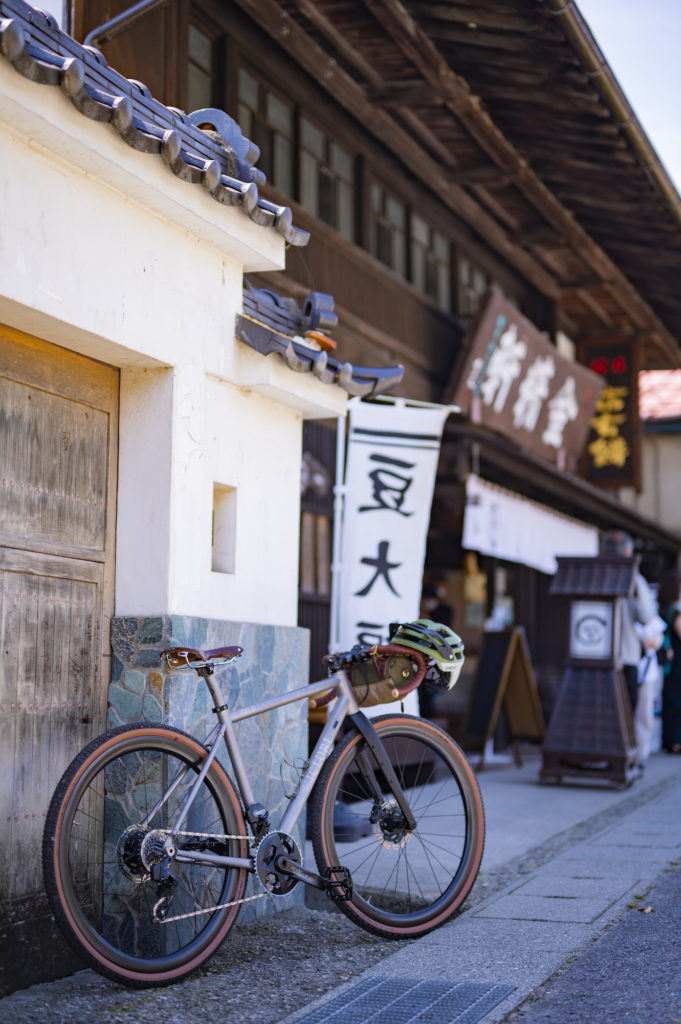
Proprietor of outdoor store “SUNDAY” in Kōfu City, Konosuke Ishikawa is one of the linchpins of Yamanashi’s bicycle community. He was instrumental in creating tour ride content for Papersky’s upcoming Tour de Nippon in June of 2023 and in the past he worked with the “Hakushu Forest Bike Roar,” an outdoor event mainly for cyclocross-style bike races. He is well versed on the state of bike paths and off-road conditions in the area – including gravel tours with the themes of “nature,” “locality,” and “daily life”. For this trip, Ishikawa-san takes us on a route featuring his favorite landscapes and locations.
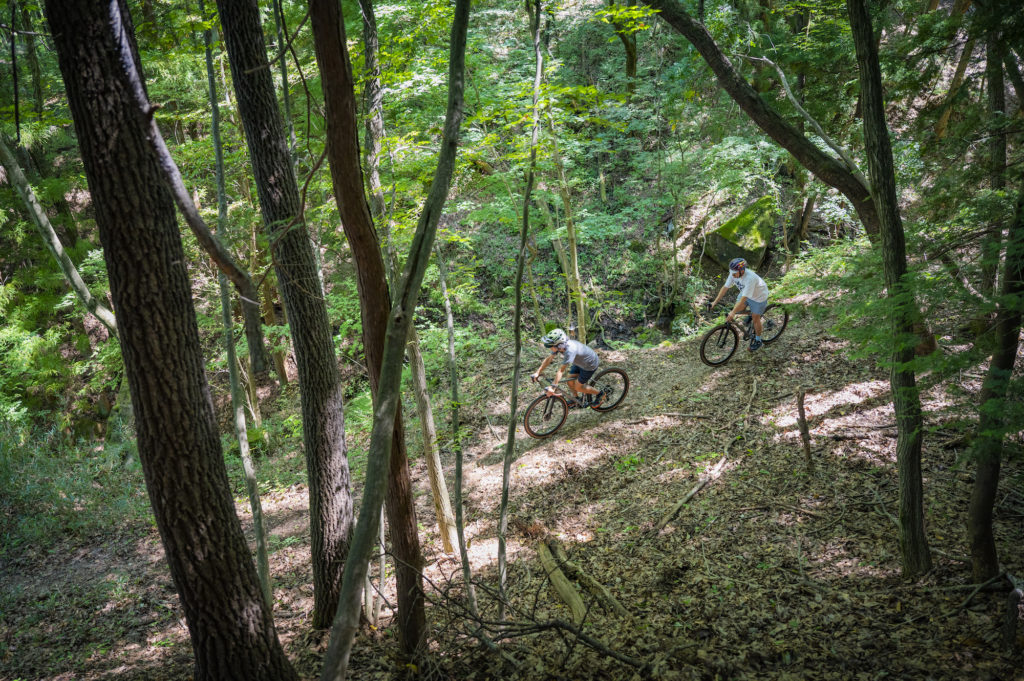
We kick off in Kobuchizawa. After meeting Ishikawa-san at the station, we head south in the direction of Hakushu and Oshiro. Awestruck by the imposing form of Mt. Kai-komagatake looming up close, we beat a hasty path to the gravel in the woods. Cruising downhill through dense forests, the gravel track is exhilarating! Pulling off the Kōshū-kaido road, we are soon on an old track that retains the charm of an ancient thoroughfare. This was once a post-station town that saw its heyday during the Edo Period as Daigahara-juku, and the area is lined with storehouses with Namako walls (literally “sea-cucumber wall”). In Daigahara, we were lured by the sight of a renovated Edo period inn, and made a pit stop at the “Daigahara Kinseiken” a time-honored Japanese confectionary store. While this place is famous for the Shingen mochi made with crystal clear water from the Ojira River and North American pears grown locally, we plump for the fluffy dorayaki.
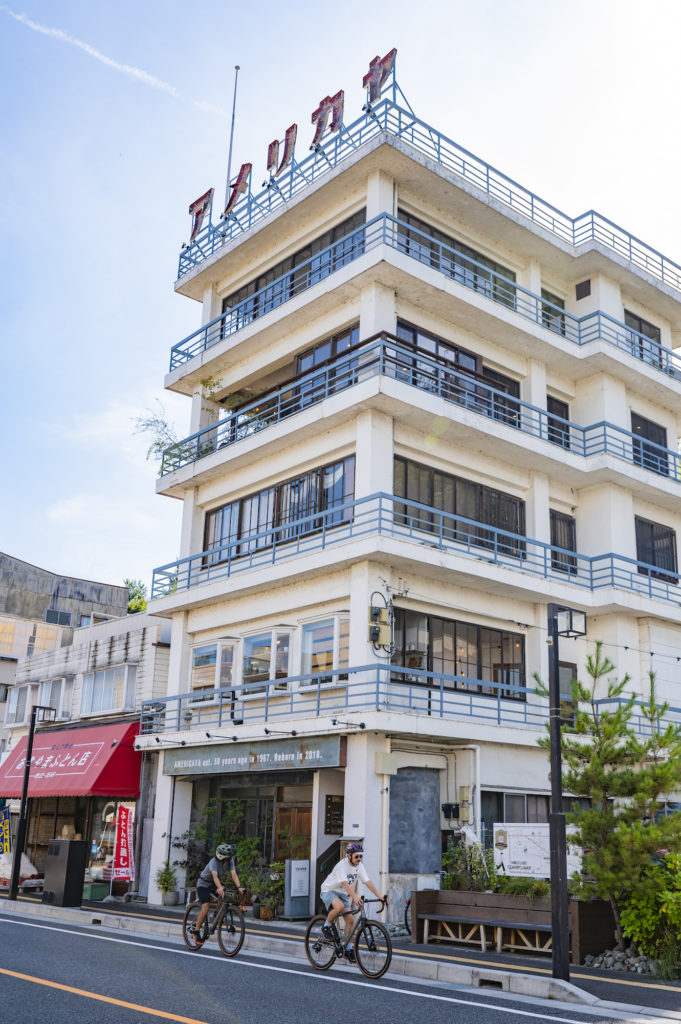
A community born out of one building
From Daigahara, we pass along the Kamanashi River and travel from Mukawa to Nirasaki. There, we visit Mr. Kenji Chiba, architect of “IROHA CRAFT” who revived the classic “Amerikaya Building“. Located in the Nirasaki Central Arcade, Americaya was completed in 1967 and has long been a landmark in the community for its flamboyant facade. The building had been vacant for 15 years after the death of its well-known owner, and Chiba-san – who specializes in renovating old private houses – revived it as a multi-purpose facility, stating that he did not want the building he had seen since he was a high school student to be torn down. True to Chiba’s wish to make the building a hub for people to gather, the current “Americaya Building” now houses a café, a DIY tool store, and a community space that anyone can use, and is thronging with people. This building spurred Chiba to revitalize “Amerikaya Yokocho,” an area of eateries where people can enjoy themselves at night, and to renovate a guesthouse, which he hopes will make the town a place where people can “stay and play.” Next, he intends to renovate a cluster of vacant houses and create an “Amerika-ya Village” residential complex, so it seems that Nirasaki’s urban development with the Amerika-ya Building as its hub will continue to evolve.
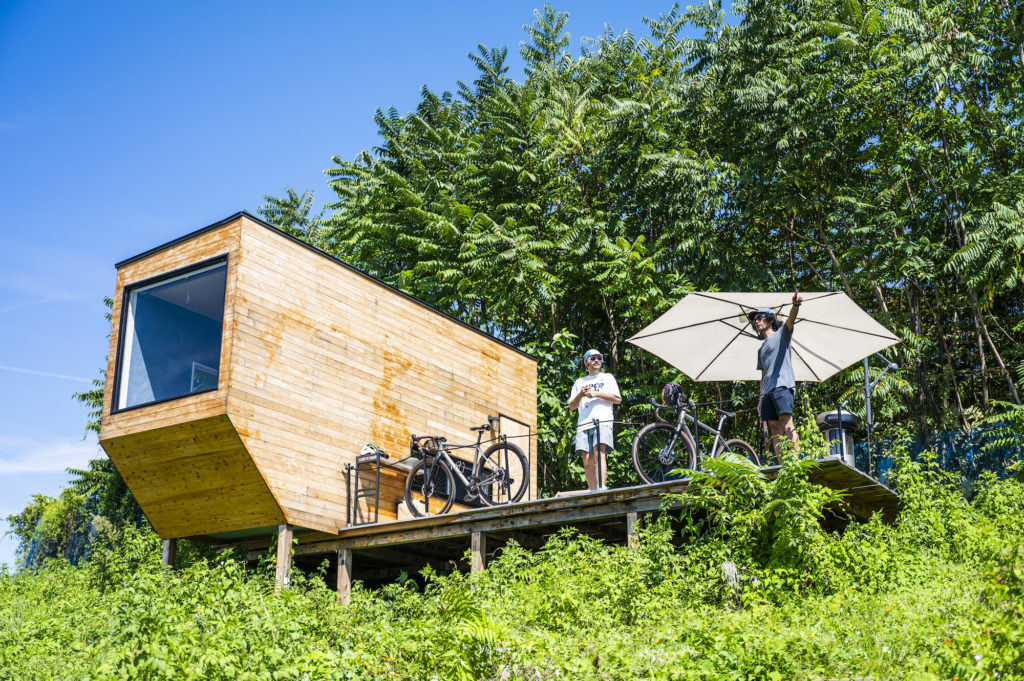
We head east from Nirasaki to “Tiny Town,” a hands-on agricultural facility in Kōfu City and our lodgings for the night. At the Tiny House, which is set up on abandoned farmland, visitors can spend a day or night as they wish, with a focus on farm work and hands-on harvesting, cooking the crops in the open kitchen, and making bonfires. It is perched on a vineyard slope and requires pushing up your bike, but the location offers a spectacular view of the Kōfu Basin.
The next morning, after a cup of “Akito Coffee” – one of Ishikawa-san’s haunts, we headed to Takeda Shrine dedicated to Takeda Shingen. Takeda Shrine was built on the site of the Castle which Shingen’s father Takeda Shingora built and where Shingen, Katsuyori, and three generations of the Kai Takeda clan resided. The Takeda Castle Town was created when many influential and capable vassals settled in the vicinity of the manor house at that time, with a large number of people engaged in commerce and industry. So strong was the influence of the town that events of Lord Shingen’s time have been preserved in modern place names around Takeda Shrine, such as Kōfuchu-machi (= downtown) Oote (= Otemon), and Yagata (= the manor house.)
“Even after the fall of the Takeda family, the Tsutsujigasaki Yakata was known as the “old castle,” and its moats, earthen mounds, and other remains were protected by the people. It was in this context that the Takeda Shrine was built on the site of the former castle. The people of Yamanashi Prefecture had a fervent wish to have a shrine dedicated to Lord Shingen Takeda here.” (Hiroshi Otoguro, a senior priest at Takeda Shrine.)
According to Otoguro, “Cyclists are highly encouraged to ride along Takeda-dori Avenue in April, when the 2-km stretch from Kōfu Station to Takeda Shrine is tinged with the color of cherry blossoms. There are also many historic sites around Takeda Shrine, including the tomb of Lord Shingen and the ruins of Yougaisan Castle built by Lord Nobutora, which are best explored on two wheels. Time permitting, you can explore these historic sites on your way to the shrine.”
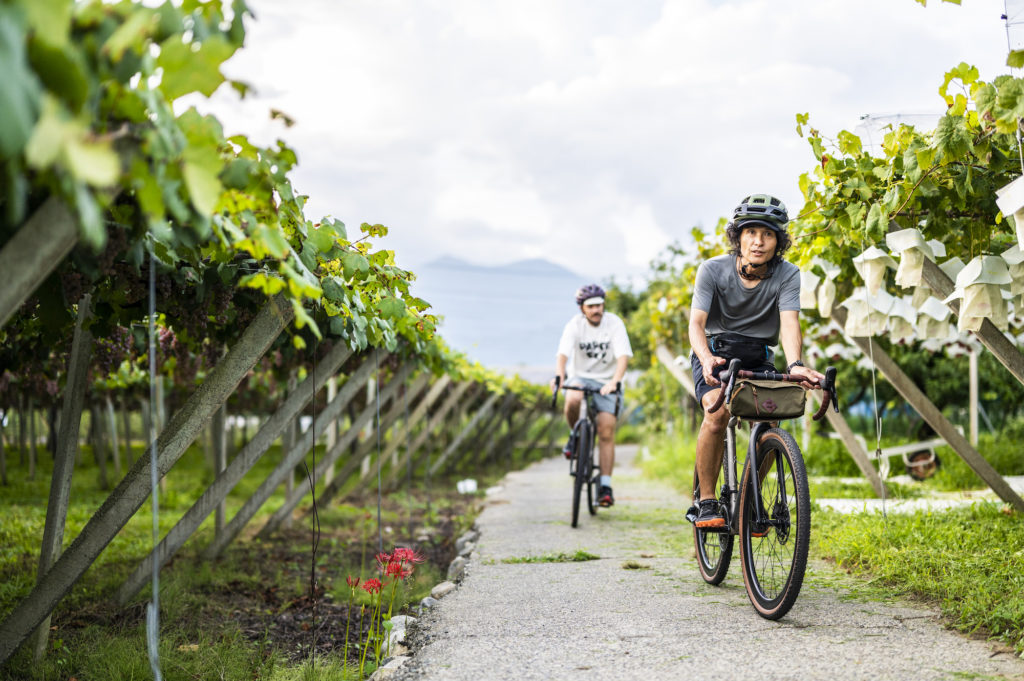
After paying our respects at Takeda Shrine, we finally reach the highlight of the second half of the tour, the fruit line. The undulating road winds through fields of peaches, grapes, and cherries. After descending the fruit line, we finally reach Enzan. In Enzan, which has become even more attractive to newcomers in recent years than Hokuto City, we visited the atelier of an old friend of Lucas, painter Jun Tsunoda. Tsunoda moved to Enzan in January of the year before last, and his studio is a self-renovation of an old factory, which he chose because of its high ceiling that allows him to create large works of art.
“I was originally looking around temperate places like Shizuoka and Wakayama, but Enzan is milder and has better weather than the Yatsugatake area, the produce is delicious, Tokyo is close, so I thought to myself ‘this is a nice place’ and moved here”
Tsunoda now exhorts young artists who cannot make a living by art alone to move to Enzan. “If you are a fruit farmer and an artist at the same time, the environment is good, you can make a decent living, and you can concentrate on creating art half the year. What could be better?”
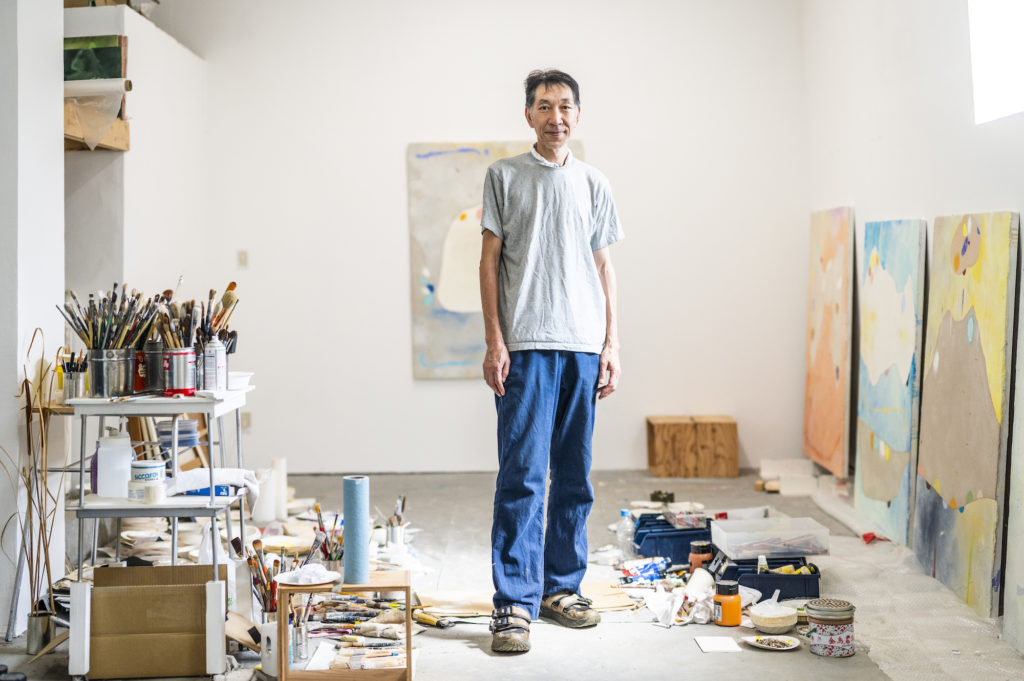
To round our trip off, what else but Kōshū wine. “Sun King Café,” located in the middle of a Katsunuma vineyard, is a cafe serving wine that was opened in 2011 by Takuya Uemura, who formerly worked in the apparel industry in Tokyo. Many winemakers congregate here, and a unique community has grown up around wine and also music, one of Uemura-san’s hobbies.
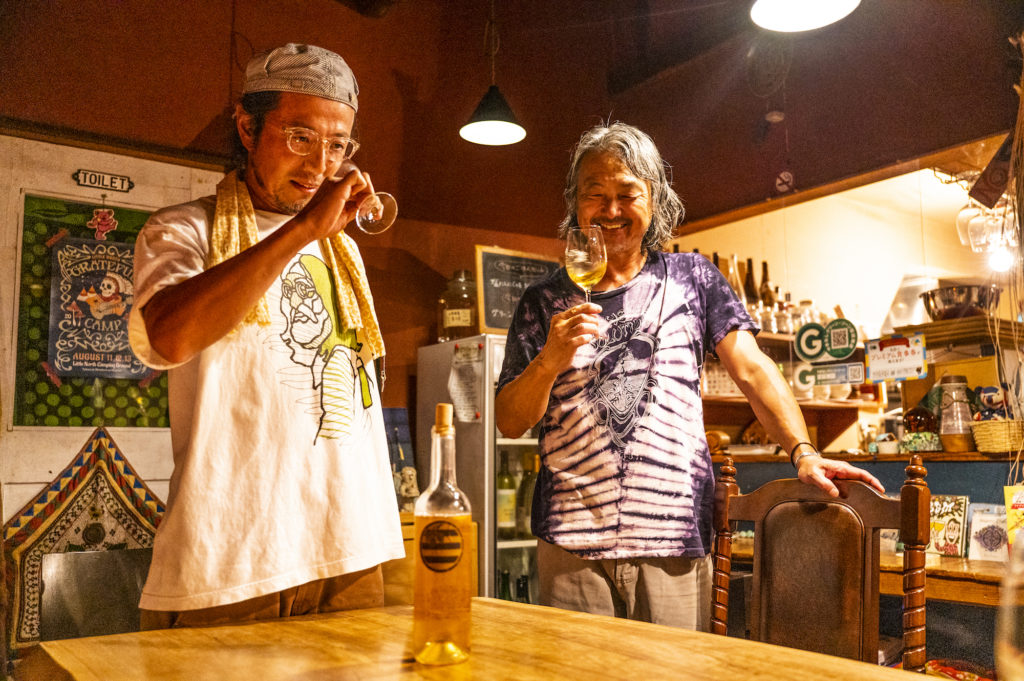
Kōshū wine began as a grape variety that grew wild 1,300 years ago. Grape farmers used these to brew wine for their own consumption, and even today, the custom of pouring a jug of wine into a teacup and serving it with pickles is said to be a legacy of this personal consumption of wine. In later years, districts and farmers began to build breweries and produce wine together. This is called a block winery, and is another characteristic of Kōshū wines. Katsunuma wine celebrates its 140th anniversary this year, and Uemura-san believes that the quality of the wines has improved dramatically over the past decade or so. “Wine is the life and legacy of its maker,” says Uemura, and the wine tastes completely different when you know the winemaker’s story.
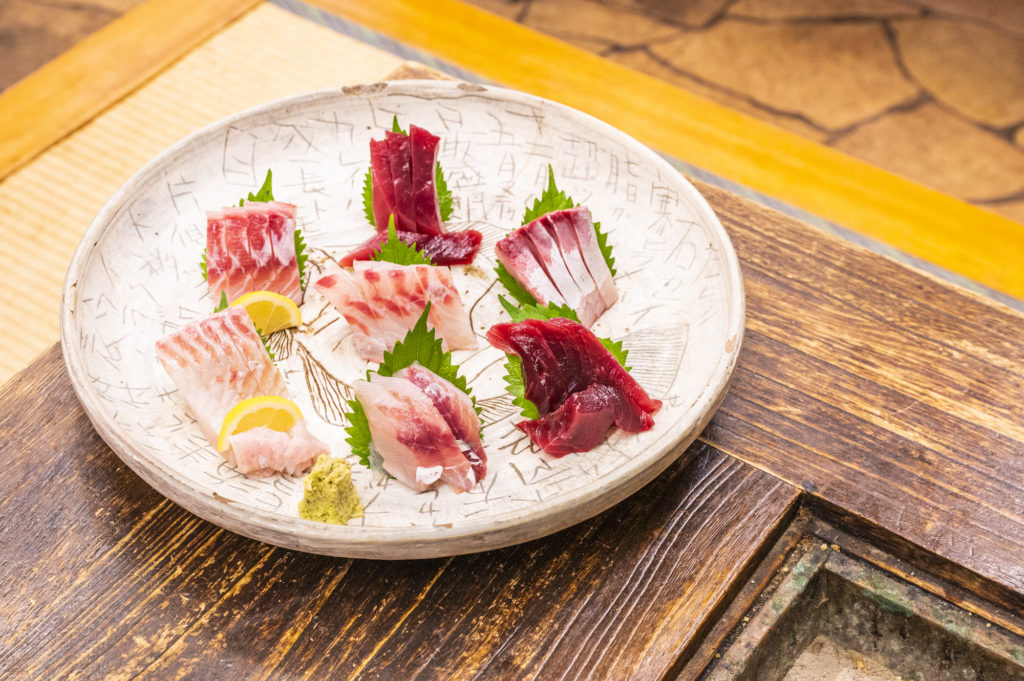
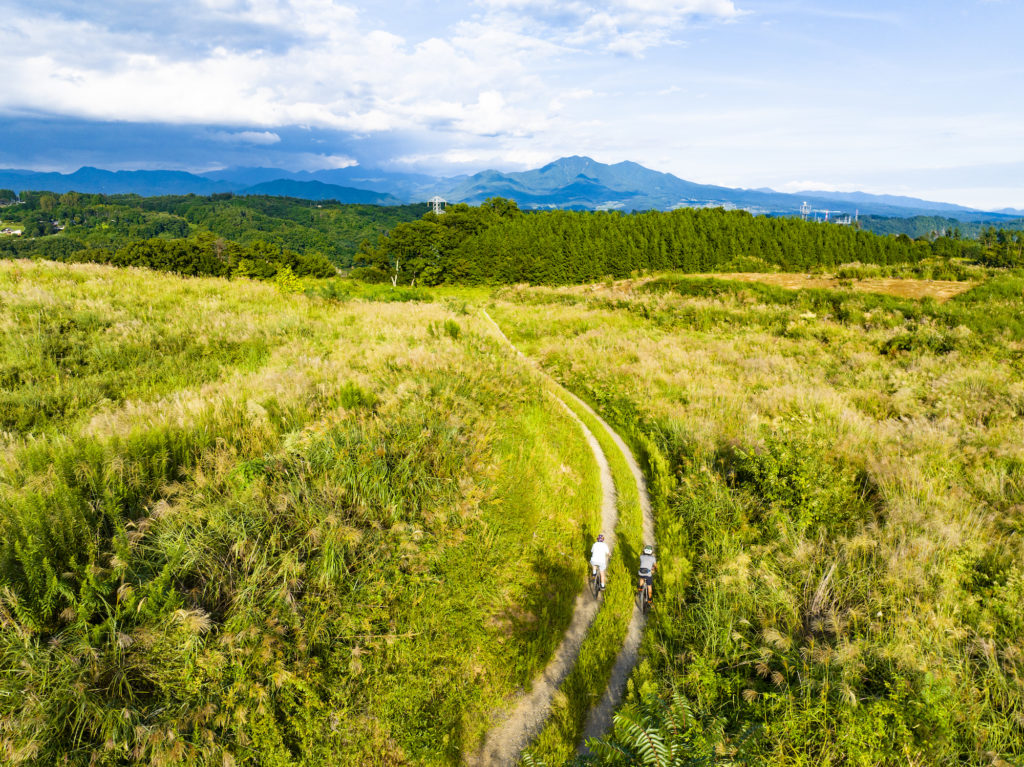
Surrounded by the unique mountain scenery of Yamanashi, the view of the Kōfu Basin, with seasonal fruits and Kōshū wine. A tour in Yamanashi’s cycling kingdom is full of pleasing sights and delicacies for both the eyes and the palate.
Konosuke Ishikawa
Born in Minami-Alps City, Yamanashi Prefecture. Following a stint as a buyer for an apparel store, he opened the outdoor store “SUNDAY” with the concept of “connecting town and mountain” and the trail running specialty store “Michi ga Massugu”. Adept at mountaineering, trail running, gravel and mountain biking, packrafting, and camping, he enjoys all the outdoor delights on offer in Yamanashi to the fullest. For the “Old Japanese Highway Nakamichi Oukan” serialized in PAPERSKY, he was in charge of devising a route from Kōfu to Yoshiwara in Shizuoka Prefecture, and enjoyed walking 80 km along ancient paths with the PAPERSKY crew.
www.sundayweb.jp
Bike Packing Guide
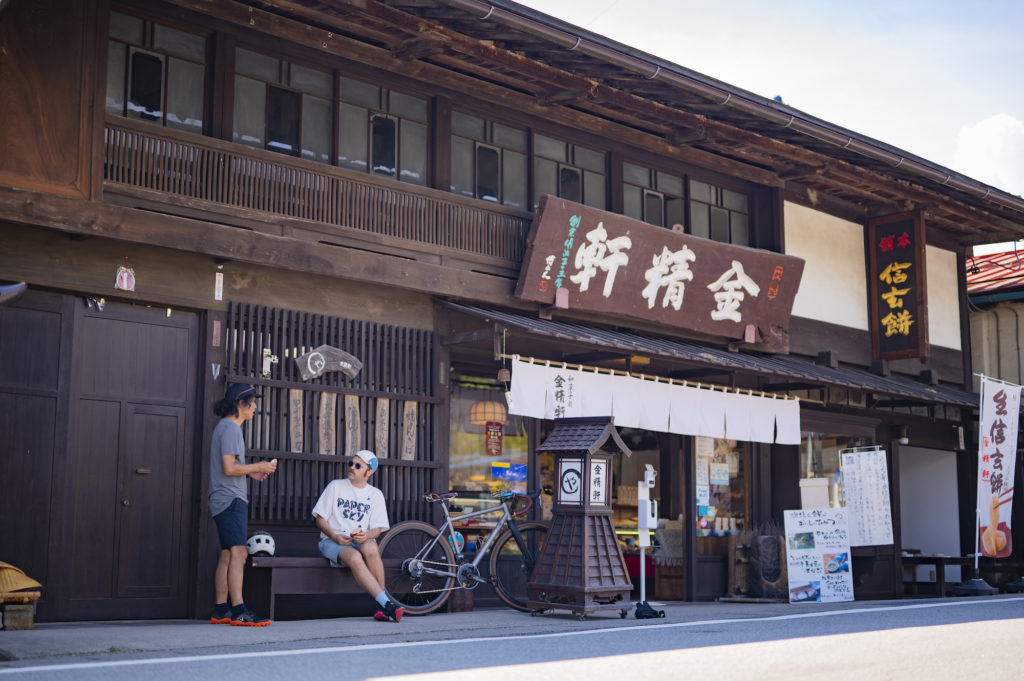
2211 Daigahara, Hakushu-machi, Hokuto-shi
TEL:0551-35-2246
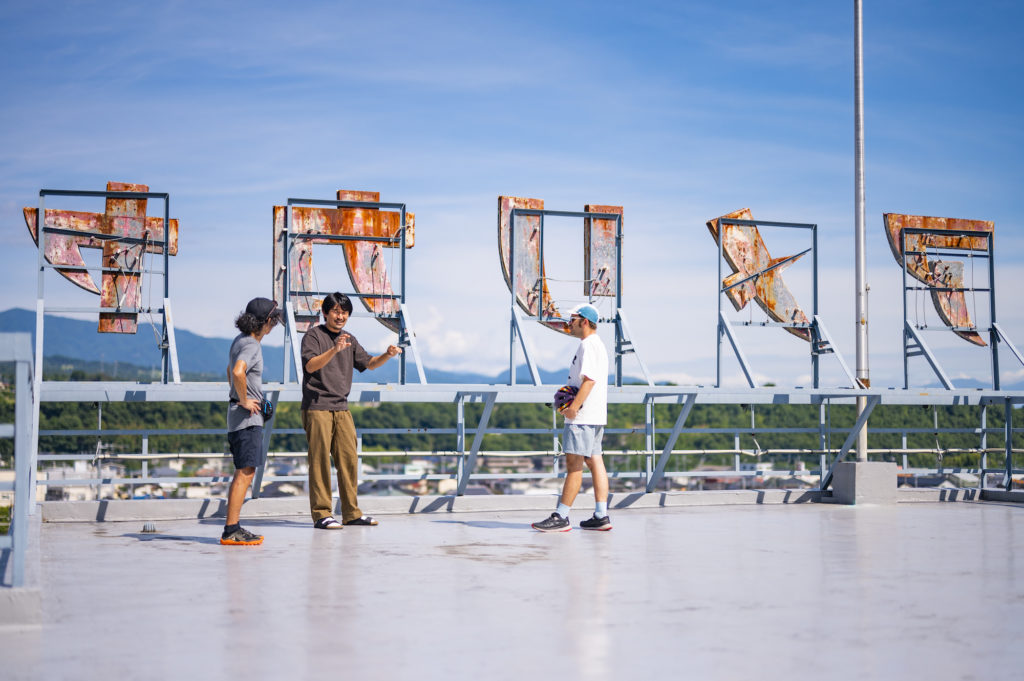
10-17 Chuo-cho, Nirasaki-shi
TEL:053-568-3729
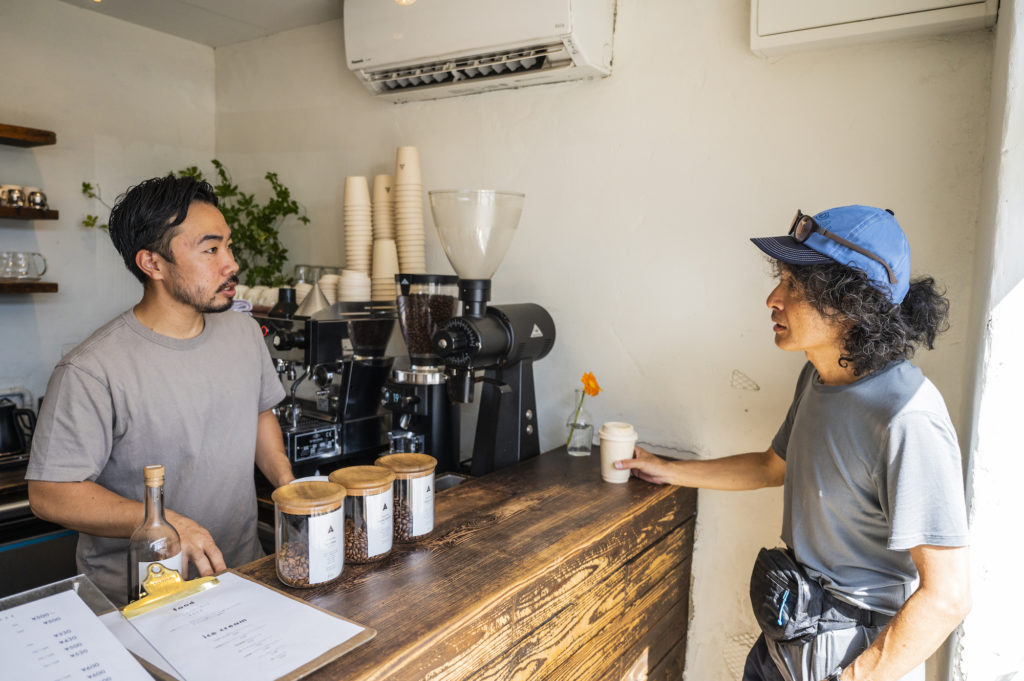
1-1-13 Takeda, Kofu-shi
TEL:055-254-3551
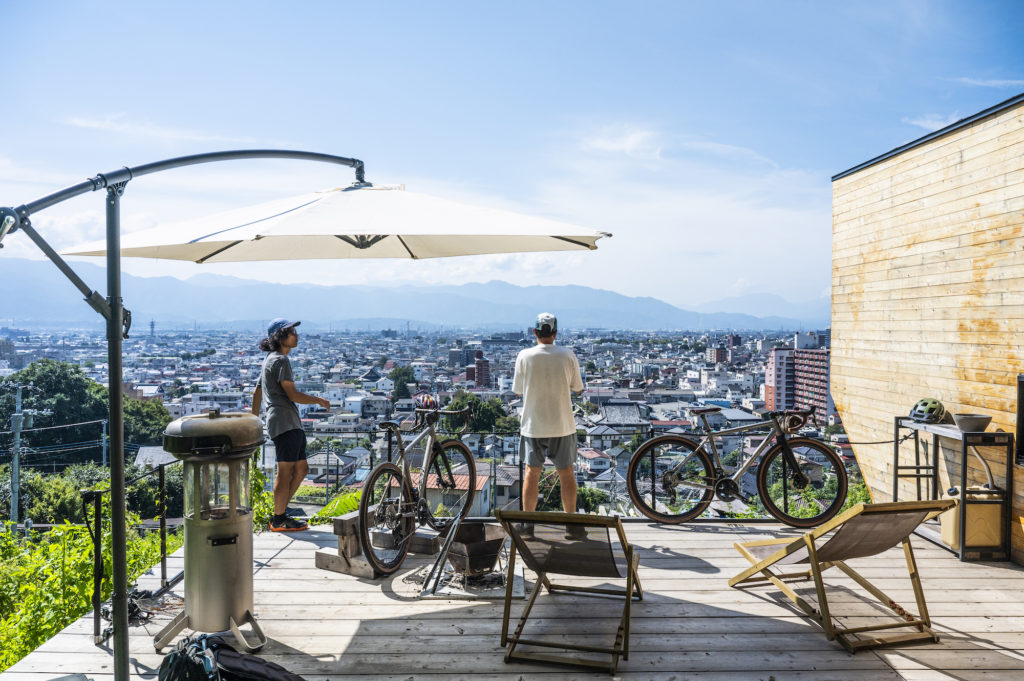
266-2 Atagomachi, Kofu-shi
TEL:0120-486-555
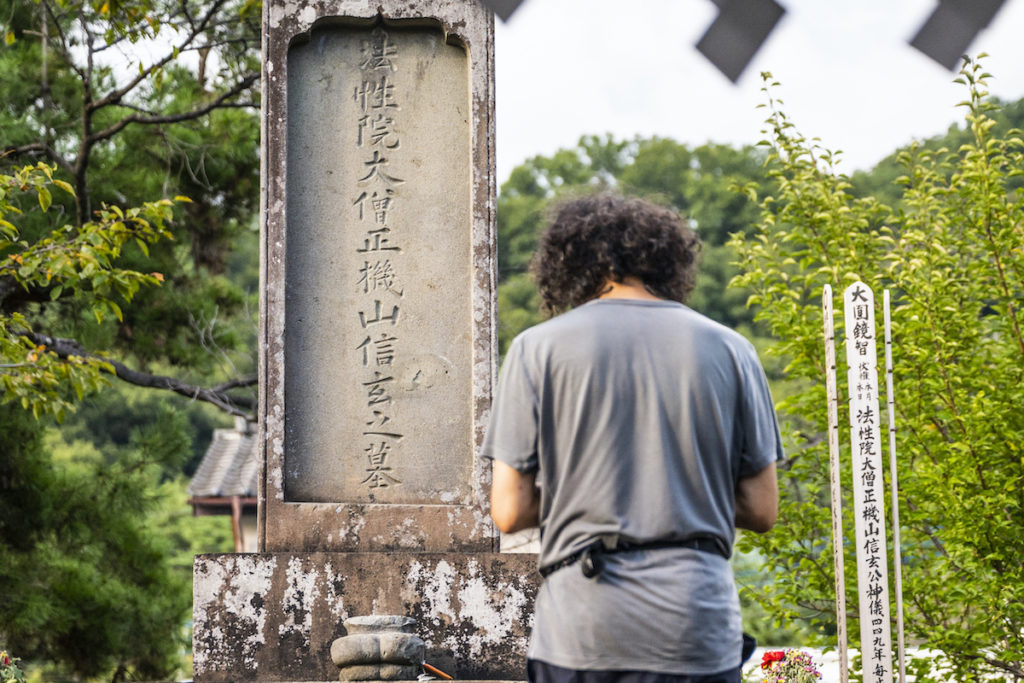
2611 Kofuchumachi, Kofu-shi
TEL:055-252-2609
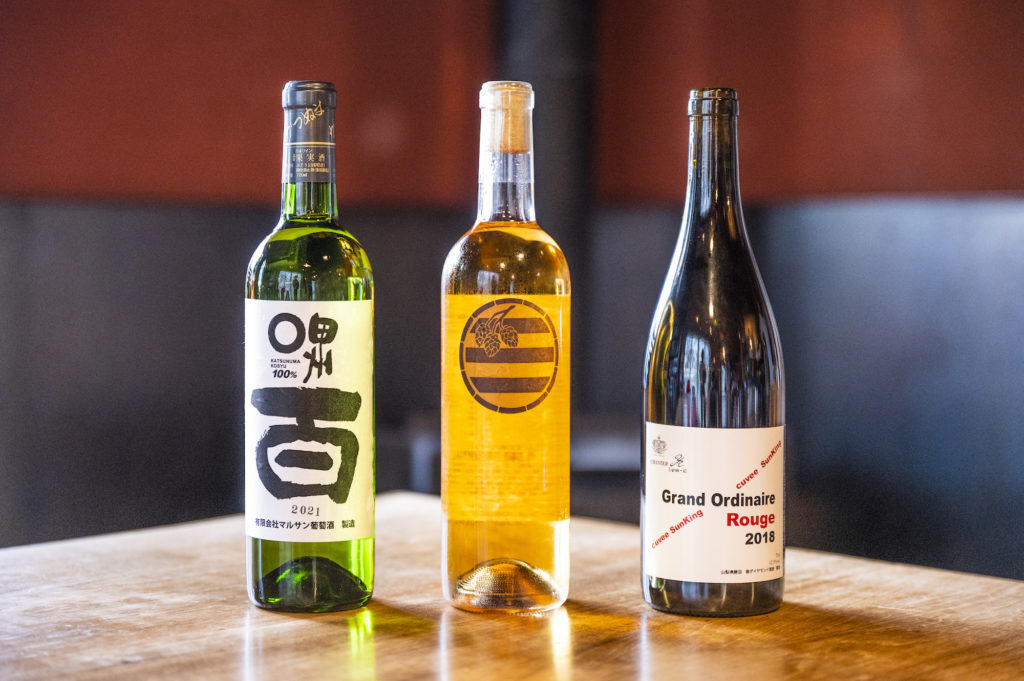
1305-2 Kyusoku, Katsunuma-cho, Koshu-shi
TEL:090-6500-0097
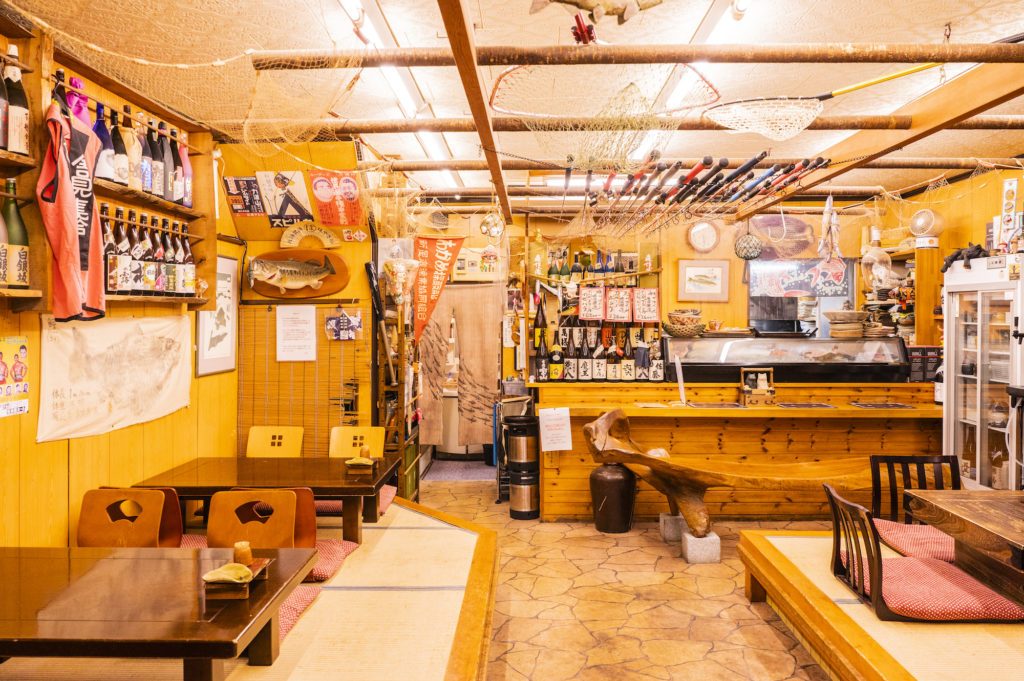
870-1 Kamiozo, Enzan, Koshu-shi
TEL:0553-33-8182












